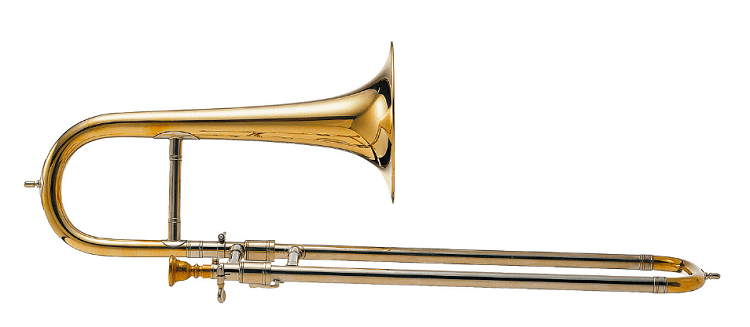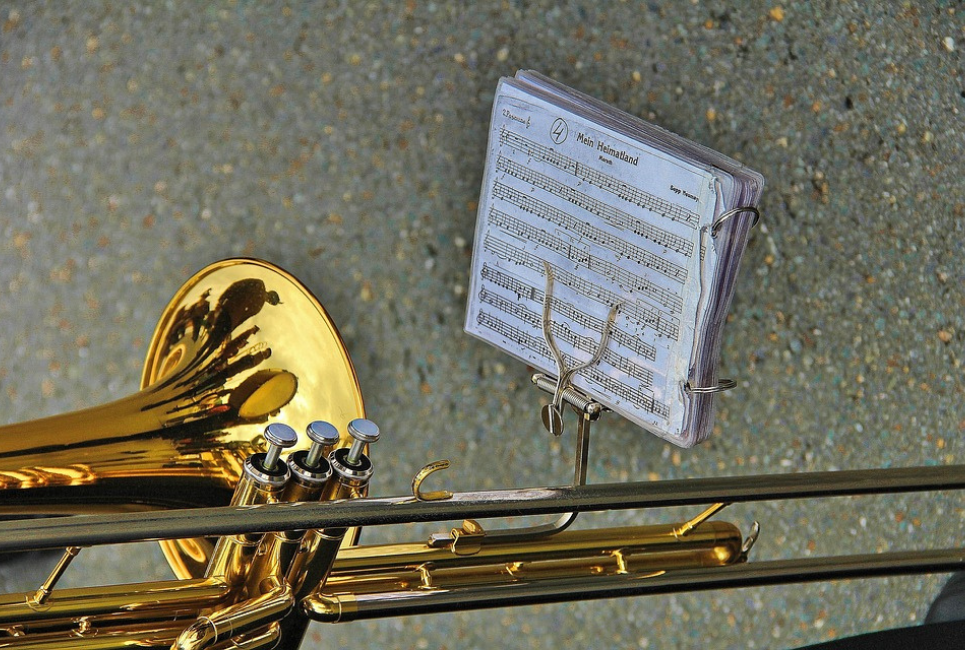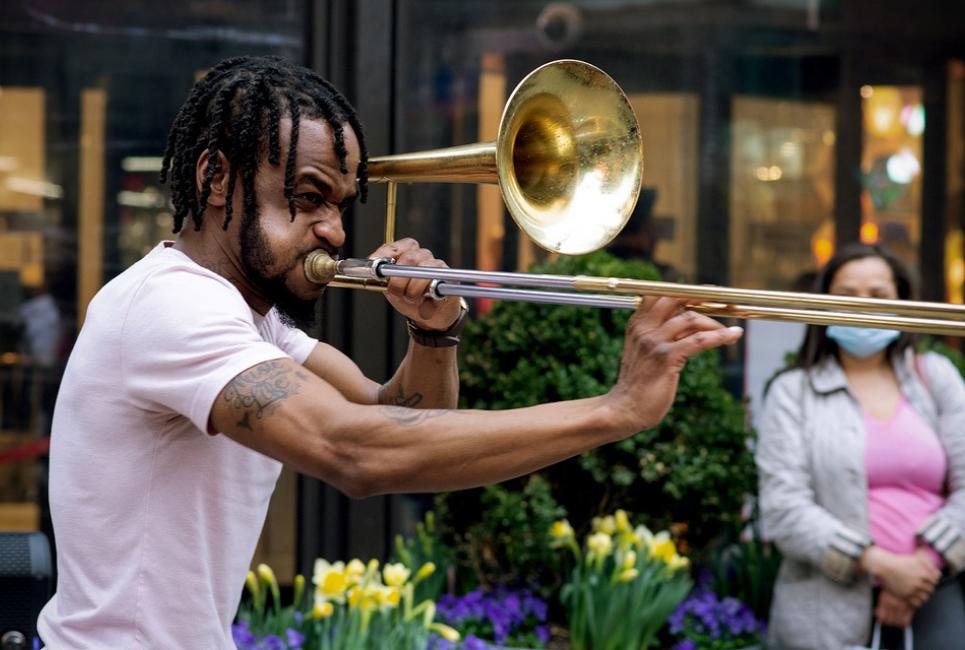- Best Double Bell Euphoniums Guide - September 30, 2022
- How to Find the Best Slide Trumpet - September 30, 2022
- Best Yamaha Euphonium Models Guide - September 26, 2022
Summary: Knowing how to find the best soprano trombone means knowing the size for the diameter, the bell-shaped, and the material that works best for your level of musical skill.
Do you like playing high notes better than low notes? Do you prefer a smaller instrument? If so, it might be time for you to learn how to find the best soprano trombone. Whether you are just starting with a trombone or have played a larger model like the tenor trombone or bass trombone for years, you can improve your musical skills by diversifying the number of instruments you are using familiar starting with the soprano trombone.
What is the Soprano Trombone?
The soprano trombone is one of the three smallest types of trombones. When most people think of the word trombone, they are actually picturing a tenor trombone which is the most popular, but there are seven different types of trombones.
In order from largest to smallest you have:
- Contrabass trombone
- Bass trombone
- Tenor trombone
- Alto trombone
- Soprano trombone
- Sopranino trombone
- Piccolo trombone
The soprano trombone slides are usually shorter than other trombones, and instead of 7 positions, there are six positions. The bell size is typically that of a trumpet, and the bore size is much smaller, between 0.450 and 0.470 inches.
This video shows you the difference between the piccolo and soprano trombone:
How to Find the Best Soprano Trombone
When you set about choosing the best trombone, you can:
- Choose based on material
- Choose based on a bell shape
- Choose based on bore size
All three of these factors influence the sound to different degrees, and because there are so many types of music, musical styles, and techniques to enjoy, you need to decide which matters most to you.
Material
A trombone is a wind instrument, which means the vibrations move through the tubing via wind (your breath). The shape and length of the tubing influence the sound, as does the material used for tubing. If you choose based material, you start with the type of brass you want.
Brass has traditionally been used to form the body of a trombone, comprised of a copper and zinc alloy that is resistant to corrosion, at least in comparison to iron, and provides a reflective and bright surface. The ratio of copper to zinc used to create the tubing will determine the timbre of the best bass trombone.
You can choose between yellow brass and gold brass for a bass trombone:
| Yellow brass | 30% zinc + 70% copper | Bright and forceful timbre |
| Gold brass | 15% zinc + 85% copper | Wide and full timbre |
Surface Finish
Once you decide which of these you prefer, you have to refine your options by surface finish material further. The finished metal tubes are filed and sanded to have a smooth surface that is subsequently coded and buffed to provide that metallic shine. The surface finish is either a gold lacquer or a clear lacquer. This finish protects the metal tubing from dirt and rest and has a subtle impact on the tone.
| Gold lacquer | Lacquer coating with gold colored paints | Sharp, powerful sound |
| Clear lacquer | Lacquer coating which is transparent | Solid, somber sound with clearer definitions at louder volumes |
Mouthpiece Material
If you look at the mouthpiece for your trombone, you might see a few materials from which to choose. Most mouthpieces are made from plated brass. My trombone has plated brass, and it works fine for me.
You will probably have a silver-plated mouthpiece if you get a Yamaha (which I don’t have). Some custom trombones come with gold-plated mouthpieces.
You can choose the one that works best for you. It comes down to feel.
From there, you can evaluate the type of mouthpiece: small shank or large shank. I recommend trying both (and trying the different mouthpiece materials) before you buy to know which one you prefer against your lips. Your mouth will spend a lot of time pressed against that mouthpiece, so it is always best to have one you are comfortable with.
Bell Shape
As I said, you can also choose your trombone based on the bell shape. You can choose between a one-piece bell or a two-piece for the best trombone.
A one-piece bell is shaped from a single sheet of metal, while a two-piece bell is shaped from two sheets of metal joined together. The one-piece has a single “spine” down its length, from where the single sheet is welded. This emphasizes the lengthwise vibrations when you play, which gives better reverberation. The two-piece design is easier to play with and has brighter reverberation.
- The traditional method is the one-piece bell, and it is shaped from a leaf-shaped piece of metal that grows thinner toward the end of the sheet.
- A two-piece belt is created with a large wide part shaped into a smaller part. You get a more consistent thickness overall, and because this is easier to make, it’s also cheaper and, therefore, what you would typically find on a beginner model.
Bore Size for the Best Soprano Trombone
When you look at a soprano trombone, you’ll see that it has a lot of different tubes and valves that are all interconnected. These tubes and valves work together to convert your breathing (or wind) into music. With the best soprano trombone, you have a very long tube that swirls around the trumpet, and this is where you hold the instrument.
The diameter of that tube will vary considerably especially compared to the more popular tenor or bass trombones. The diameter of the tubing has a tremendous impact on the sound your instrument produces. The bore size and the bell size are the two most essential factors in determining the sound made by your instrument.
For beginners and children in particular who are learning how to play the trombone, bore size is essential on a soprano trombone because it impacts the amount of air needed to fill the tube. The smaller the bore size, the less breath is necessary, which means, the easier it will be for a beginner to supply a steady stream of air while playing and developing good musical technique.
As mentioned, the bore size for a soprano trombone is between 0.450 and 0.470 inches. The smaller bore size, around 0.450 inches of a soprano trombone, will be much softer and mellower in tone. Intermediate and advanced players might find very small bore sizes restrictive in terms of their playing technique in the range of notes they are comfortable with, which is why more advanced musicians should look for the best soprano trombone with an appropriate thick diameter near the 0.470-inch range.
This video gives you a demonstration of the soprano trombone:
Factors to Consider With the Soprano Trombone
Outside of the critical features of the physical instrument, there are a few other factors to consider.
Budget
The budget will play a significant role in determining the best trombone for your situation. There are plenty of beginner models which are pretty affordable, between $100 or $200. Given that the soprano trombone is so small, it simply requires fewer materials to construct and therefore is less expensive than larger models like the bass trombone.
Advanced musicians should expect to spend significantly more when buying a new instrument because this is the instrument that you will play regularly and likely for many years to come. The smaller variations that different handcrafted professional-grade instruments compared to beginner models are designed to bring out the advanced techniques and fingering skills you have as a professional.
New, Used, or Rented
If the model you want is outside your budget, you can always consider using soprano trombones. Finding a used instrument can save you a lot of money; just be sure that there aren’t a lot of significant issues with the instrument, like crimps in the tubing or severe rust problems.
Some rust here and there might be tolerable if it’s not located in an area that you regularly play. Metal polish can remove smaller rust, or you can take your used trombone to a professional who can re-plate the outside.
Consider renting the best soprano trombone if you are not a serious player or the smaller members of your family are just starting. Renting is an excellent option if you only want to play the soprano trombone for a musical season like Christmas time or if you need it just for a few months of practice.
The Best Soprano Trombones
Soprano trombones can be hard to find because they are among the smaller and least commonly played of the trombone family. These are not instruments that you can order from half a dozen reliable trombone manufacturers on Amazon. These typically have to be ordered from the manufacturers directly. Thankfully there are a few great manufacturers each of whom provides similarly reliable brass instruments.
Thein

Thein makes an excellent soprano trombone. It is marketed as an instrument from the Renaissance made with historical designs. I use Thein because I love this brand’s quality control and German engineering.
Pros
- Perfect for Baroque style music
- Same mouthpiece as a trumpet
- Excellent intonation
Cons
- The bore is 11.5 mm and the bell is 140mm without any other options
- You can only order the lacquered finish
Wessex

Wessex provides elegant soprano trombones that produce a beautiful sound perfect for popular Baroque music or trombone choir music. This company is well worth the price even for a beginner because they give you lightweight foam cases to protect your instrument and store it while traveling.
Pros
- You get an elegant design with an 11.5 mm bore and 120 mm bell
- Has a trumpet mouthpiece
- Comes with a foam body case
Cons
- Slightly smaller bell than Thein
FAQs
Answer: A soprano trombone is cheaper than a more prominent tenor or bass trombone because the instrument is smaller and requires less metal to construct. You might find beginner models that cost around $300 or advanced models upwards of a few thousand dollars.
The cost of a soprano trombone is entirely based on the level, whether it is a student-level or a professional level or somewhere in between, and the manufacturer. Different manufacturers craft their trombones from different brass compositions with different finishes. Each of these combinations of finish and material can influence the cost.
Answer: Yes. If you play any other trombone, you will easily convert your skills to the best soprano trombone. You might even find it easier to play because the soprano trombone has six positions instead of seven and because the smaller tubing means less breathing.
Answer: The soprano trombone plays the same range as most trumpets, so that any soprano trombone sheet music will be written in treble clef. Suppose you play the trumpet, or you have played something like a tenor trombone. In that case, you probably already have some familiarity with sheet music in the treble clef, so being able to read soprano trombone sheet music will be very easy for you.
Answer: The best places to look for a soprano trombone are online or local music stores. I recommend you at least hold or practice with a soprano trombone before you buy one so that you know how it feels in your hands, what the mouthpiece feels like, and whether you like the size and sound it produces. Testing a soprano trombone in person also allows you to listen to the different tones produced by other manufacturers.
Every manufacturer is slightly different, and you might prefer the tone of one soprano trombone over another. You can always rent a soprano trombone from a music store before investing in the make and model you want long-term.
Answer: The soprano trombone is appropriate for any situation that includes a trombone. Concert groups or jazz bands and orchestras can support the soprano trombone. The soprano trombone has more versatility because of the higher notes it can play. Ensemble pieces might add soprano trombones or a trumpet piece that you can play using your soprano trombone.
Bottomline
The bottom line is that knowing how to find the best soprano trombone means knowing exactly what type of material you want and what size is most appropriate for your skill. Many people who played the soprano trombone already have familiarity with other trombones, but now they want to play in a different register. If this is the case, a larger bore size and ball diameter will give you the projection and the control over the tone.
If you are brand new to the world of wind instruments and you’re just picking up a trombone for the first time, a smaller size will make it easier for you to focus on your breathing technique and learn to hold the instrument properly.
Looking for more interesting readings? Check out:



